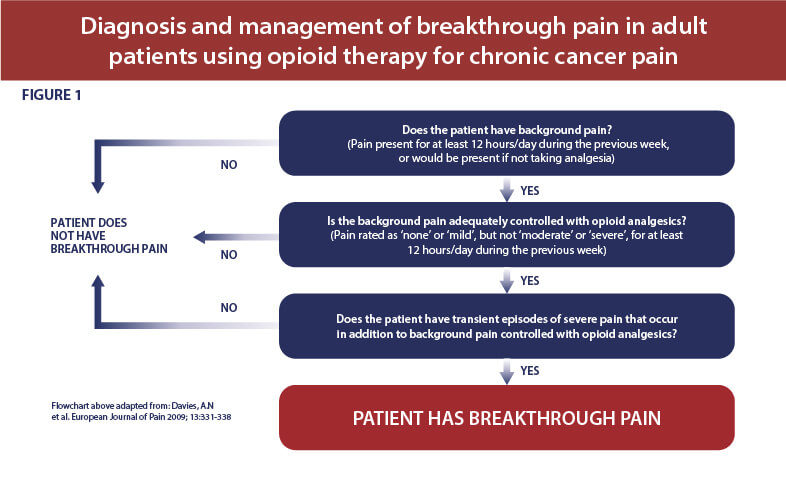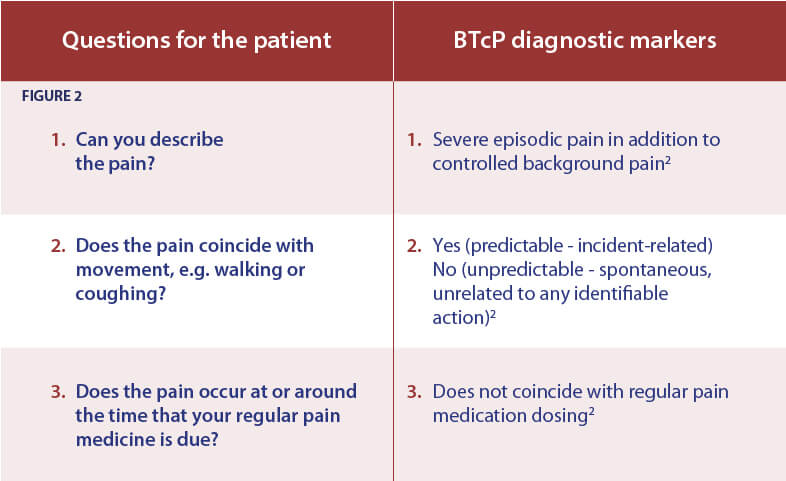BREAKTHROUGH CANCER PAIN (BTCP)
Diagnosis
Before reaching a diagnosis of BTcP, it is important to assess the patient's background pain medication to ensure adequate pain relief is being provided.
The Association for Palliative Medicine of Great Britain and Ireland (APM) has created an algorithm to aid diagnosis (figure 1). This differentiates patients with BTcP from those with uncontrolled pain and/or those experiencing intermittent/transitory pain.1
If background pain is adequately controlled, but the patient continues to experience transient episodes of severe pain, they should be asked to describe the nature of this pain. The table below details questions and diagnostic markers which can be used to form part of the assessment and diagnosis of BTcP (figure 2).
Once a positive diagnosis of BTcP has been reached, this can inform decision making on appropriate management.
For advice on the responsible use of opioids to treat pain, including other types of pain, please click here
-
References
1. Davies AN, et al. Eur J Pain. 2009;13:331-338.
2. Davies A (Ed.) Cancer-related breakthrough pain (2nd edition). Oxford: Oxford University Press 2012.
KKI/UK/ABS/0012 November 2023


 Deutschland
- Deutsch
Deutschland
- Deutsch España
- Español
España
- Español Italia
- Italiano
Italia
- Italiano
